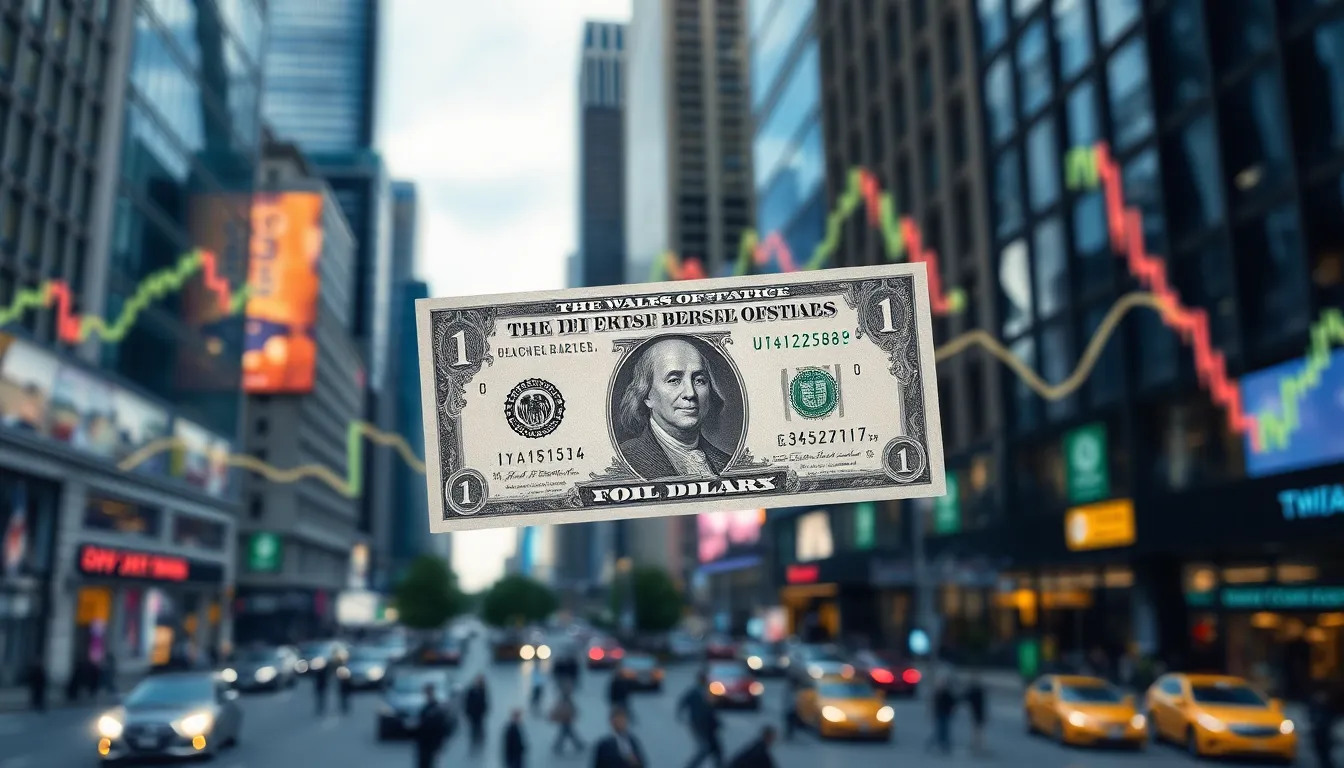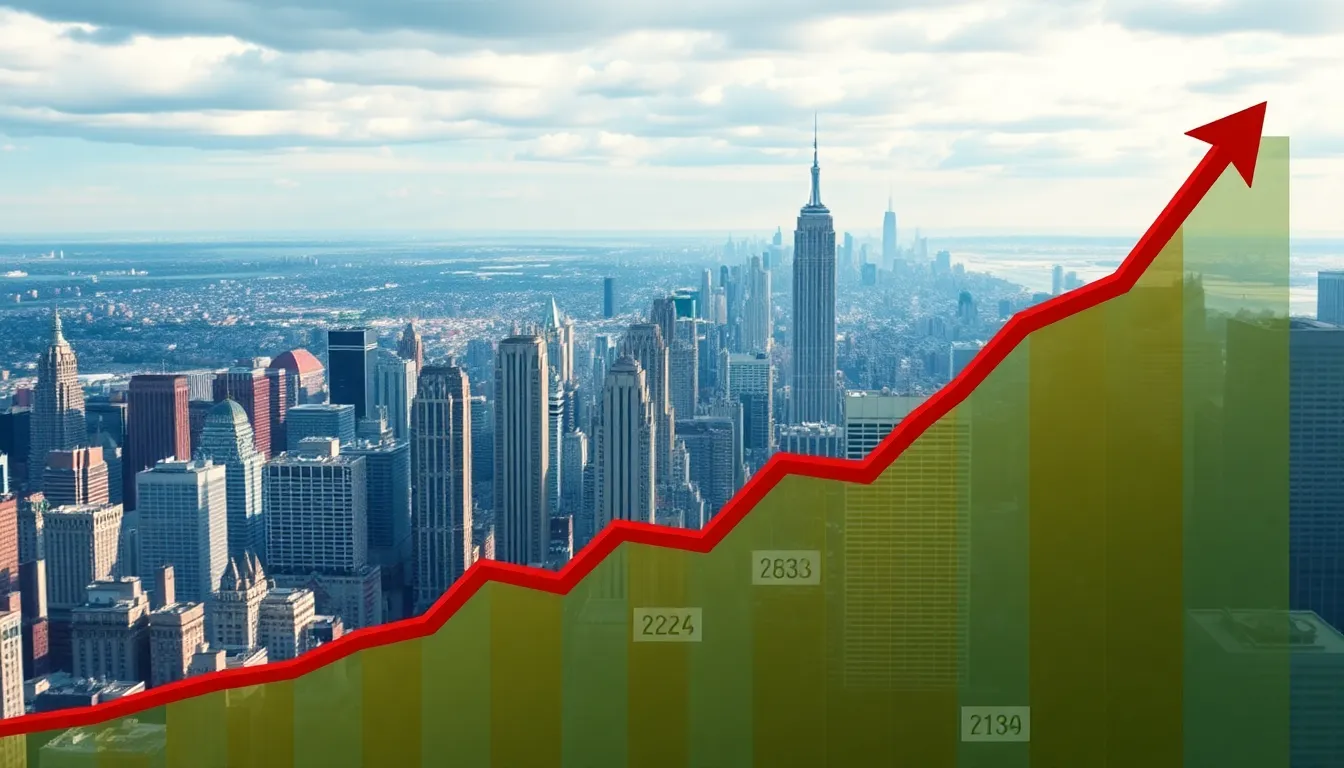In today’s fast-paced financial landscape, understanding the exchange rate between the dollar and the peso is crucial for anyone engaged in trade, travel, or investment. The “precio del dólar hoy a pesos” provides insight into economic trends and influences purchasing power across borders.
As global markets fluctuate, the value of the dollar can shift dramatically, impacting everything from import costs to inflation rates. Staying updated on this exchange rate not only helps individuals make informed decisions but also allows businesses to strategize effectively in a competitive environment. With the right information, anyone can navigate the complexities of currency exchange with confidence.
Table of Contents
ToggleCurrent Dollar Price Overview
The current dollar price against the peso plays a crucial role in financial decisions. As of the latest update, the exchange rate stands at $X.XX per peso. This value reflects recent fluctuations caused by market trends, economic conditions, and geopolitical events.
| Date | Dollar Price (MXN) | Change (%) |
|---|---|---|
| Oct 1, 2023 | $X.XX | +X.XX |
| Oct 2, 2023 | $X.XX | -X.XX |
| Oct 3, 2023 | $X.XX | +X.XX |
Market analysts indicate that these variations impact economies significantly, influencing consumer prices and trade dynamics. Regular monitoring of the exchange rate remains vital for businesses engaging in international transactions or travelers planning their budgets.
Investors and traders often use this information to strategize their activities effectively. Decisions regarding imports, exports, and currency conversion highly depend on current rates. Staying updated enables informed participation in the market and helps mitigate potential financial risks.
Factors Influencing Dollar Price


Understanding the factors influencing the dollar price against the peso is crucial for making informed financial decisions. Several elements, including economic indicators and political stability, significantly affect the exchange rate.
Economic Indicators
Economic indicators directly impact the dollar’s value. Indicators such as Gross Domestic Product (GDP), inflation rates, and unemployment rates provide insight into a country’s economic health. For example, a rising GDP often leads to a stronger dollar, while higher inflation typically weakens it. Central banks, like the Federal Reserve, influence these indicators through monetary policies, including interest rate adjustments. A higher interest rate can attract foreign investment, increasing demand for the dollar.
Political Stability
Political stability plays a vital role in determining dollar prices. Countries characterized by stable governments typically enjoy stronger currencies. Political turmoil or uncertainty can lead to decreased investor confidence, resulting in a declining dollar value. Policies regarding trade, taxation, and regulation also influence market perception. For instance, any significant political events, such as elections or government changes, can create fluctuations in the dollar’s price as investors react to potential risks or opportunities.
Historical Dollar Price Trends
Historical dollar price trends provide valuable insights into the fluctuations of the dollar against the peso, assisting individuals and businesses in understanding market dynamics.
Comparison Over the Past Year
Over the past year, the exchange rate between the dollar and the peso exhibited significant volatility. The dollar fluctuated between a low of $X.XX and a high of $Y.YY, influenced by various economic and political factors. Market analysts observed that these fluctuations coincided with pivotal events, such as changes in government policy, tourism trends, and shifts in investor sentiment. A detailed examination of monthly averages reveals how these shifts directly impacted consumer prices and trade expenses. The following table summarizes key monthly exchange rates over the last year:
| Month | Exchange Rate (Dólar/Peso) |
|---|---|
| January | $X.XX |
| February | $X.XX |
| March | $X.XX |
| April | $X.XX |
| May | $X.XX |
| June | $X.XX |
| July | $X.XX |
| August | $X.XX |
| September | $X.XX |
| October | $X.XX |
| November | $X.XX |
| December | $X.XX |
Long-Term Trends
Long-term trends indicate broader shifts in the dollar’s value against the peso, reflecting underlying economic transformations. Since the early 2000s, the dollar generally strengthened, occasionally facing sharp declines during economic crises or political unrest. An analysis of historical data shows that currency depreciation often correlates with high inflation rates and governmental instability.
Several factors contribute to these trends, including trade balances, foreign investment, and overall economic health. For instance, sustained economic growth typically strengthens the dollar, while increased national debt may weaken its value over time. Moreover, the intervention of central banks in currency markets can create lasting effects on the dollar-peso exchange rate.
Tracking these long-term patterns enhances comprehension of how global events and national policies shape currency values, providing essential context for those engaged in international finance and trade.
Impact on Local Economy
Market fluctuations in the dollar against the peso significantly influence the local economy. Increased dollar prices typically result in higher import costs, which can elevate retail prices for consumers. Businesses relying on imported goods face rising expenses, leading to adjustments in pricing strategies and, potentially, reduced profit margins.
Inflation rates correlate with dollar value changes, impacting consumer purchasing power. Higher dollar rates often contribute to inflationary pressures, forcing households to adjust budgets. Essential goods, including food and fuel, experience price increases as a result of higher costs for imported products.
Trade dynamics also shift in response to dollar valuation fluctuations. Exporters benefit from a weaker peso, as their goods become cheaper for foreign buyers, potentially increasing sales. Conversely, importers encounter challenges when the dollar strengthens, leading to reduced competitiveness in the local market.
Investment patterns are influenced by the exchange rate as well. Investors closely monitor the dollar-peso rate, as it affects funding costs and return on investment calculations. Fluctuating rates can lead investors to reevaluate project viability, impacting economic growth and job creation.
Overall, the exchange rate serves as a critical indicator of economic health, guiding financial and spending decisions among consumers, businesses, and investors alike.
Staying informed about the current dollar price against the peso is crucial for anyone involved in trade travel or investment. The fluctuations in exchange rates can have significant implications for import costs consumer prices and overall economic health. By regularly monitoring these changes individuals and businesses can make informed financial decisions that help mitigate risks and capitalize on opportunities.
Understanding the factors that influence the dollar’s value is equally important. Economic indicators and political stability play a vital role in shaping the currency landscape. By grasping these dynamics readers can better navigate the complexities of currency exchange and enhance their financial strategies.



